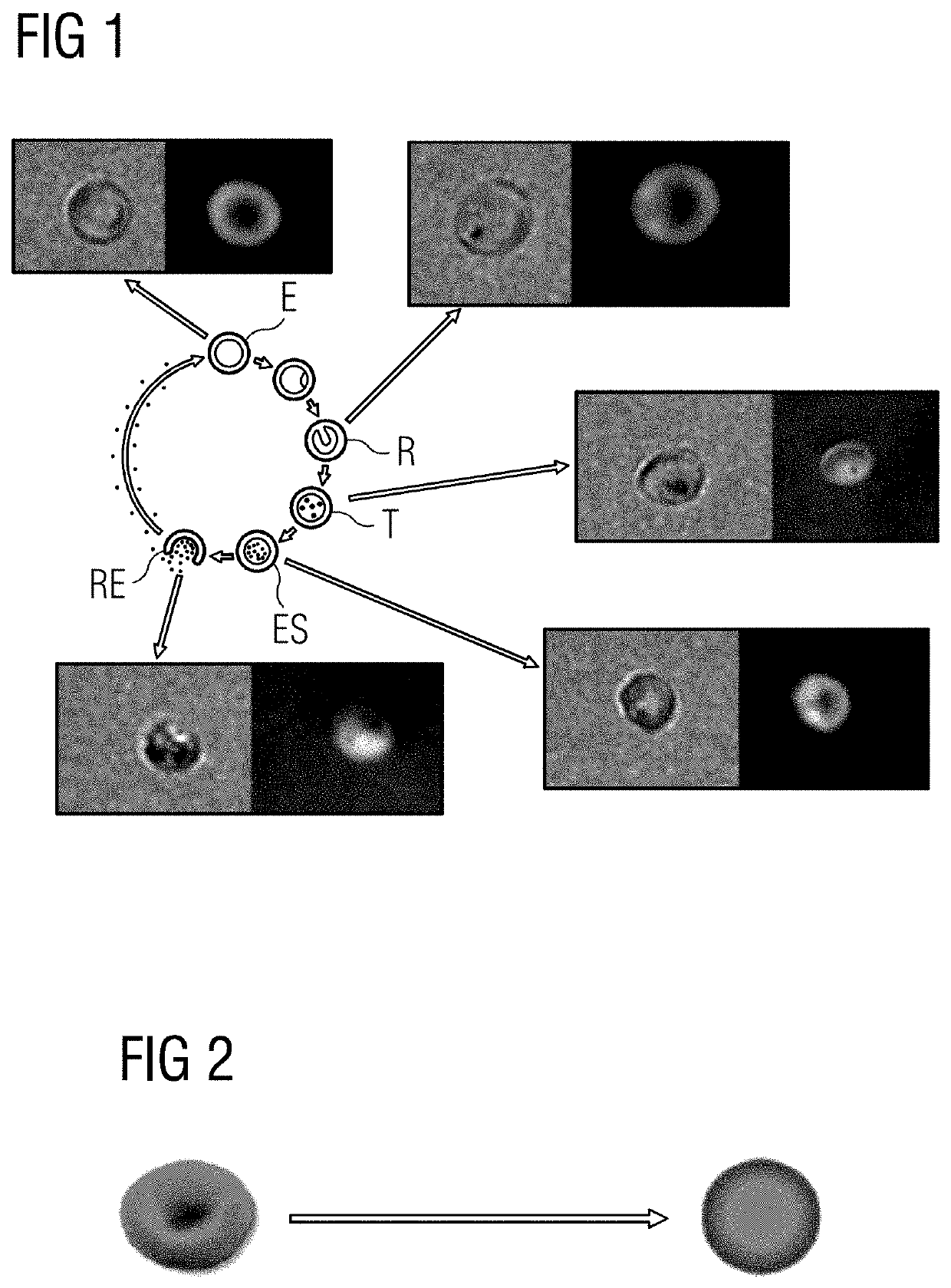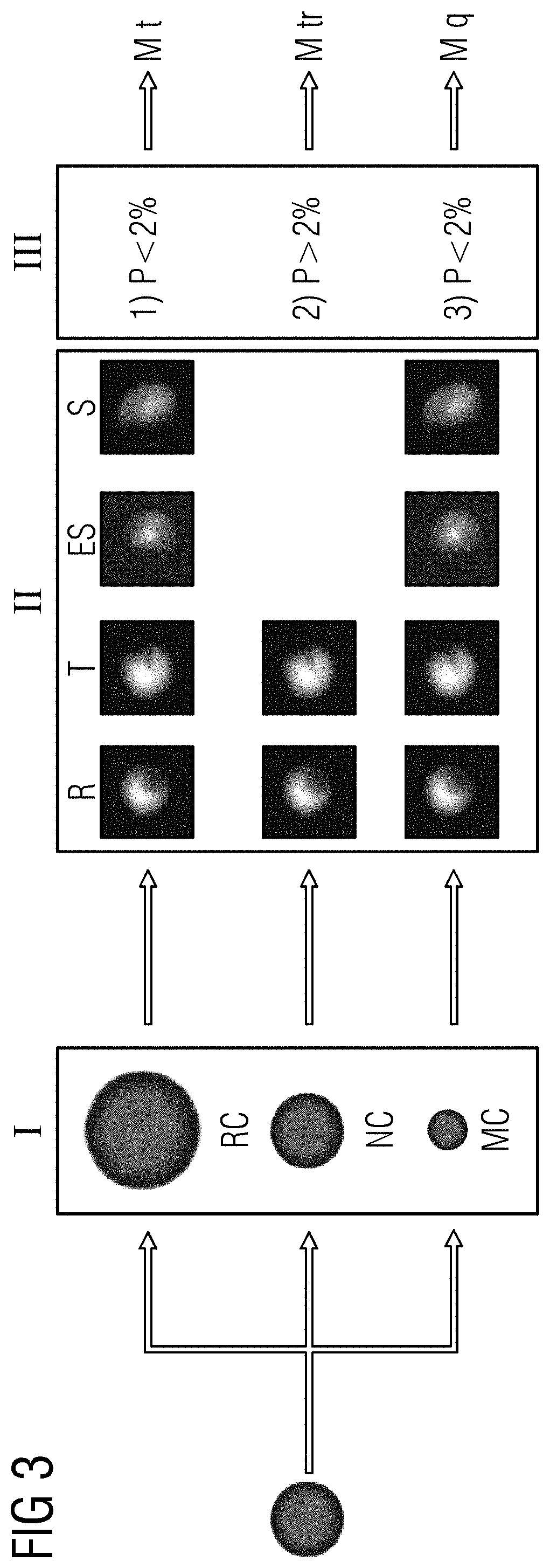Specific malaria detection with digital holographic microscopy
a technology of holographic microscopy and specific malaria, applied in the direction of material testing goods, instruments, material analysis, etc., can solve the problems of reducing the use of microscopy, affecting the accuracy of the results, and the above-mentioned methods suffer from the above problems
- Summary
- Abstract
- Description
- Claims
- Application Information
AI Technical Summary
Benefits of technology
Problems solved by technology
Method used
Image
Examples
example 1
[0083]In a first example, erythrocytes infected with M. tertiana (P. ovale and P. vivax), M. tropica (P. falciparum), and M. quartana (P. malariae) were first spheroidized separately with an aqueous standard buffer solution which is as follows:[0084]SDS (sodium dodecyl sulfate), 0.035 mmol / L, which affects the cell membrane[0085]buffer (pH 7.4), e.g. based on hydrogenphosphate / dihydrogenphosphate[0086]sodium chloride (109.3 mmol / L)[0087]glutaraldehyde (0.11 Vol. %)[0088]Na2EDTA (4.03 mmol / L)[0089]Na4EDTA (3.36 mmol / L)
[0090]Images of the non-spheroidized RBC and the spheroidized RBC were taken for comparison and are shown in FIG. 2 (incident light microcopy at magnification 40×; NA=0.55), with the spheroidized RBC shown on the right.
[0091]With the separately infected RBCs, the differentiation between the different malaria species could then be carried out using DHM detection (transmitted light; magnification 40×; NA=0.55).
[0092]The dilution of the RBC in the buffer solution was adjus...
example 2
[0103]In the present method, also a machine algorithm can be applied for an automated evaluation.
[0104]In an exemplary embodiment, the training of the algorithm was carried out using cells infected with P. falciparum in defined cell stages in the setup of Example 1. The malaria-infected cells were selected manually from synchronized cultures of a reference laboratory and spheroidized and detected as in Example 1. A neural network was used for classification of the different malaria stages. One hundred cells for each cell type were used for training. Afterwards, a testing of the neural network was carried out using 200 randomly chosen cells. For obtaining a confusion matrix, all states were considered and evaluated against each other. The results of the training are shown in the following table 1.
TABLE 1Confusion matrix from training (I)Confusion matrix (% correct labels)HealthyRing stateTropostateSchizontsSegmenterHealthy98.91.10.00.00.0Ring state6.756.032.02.72.7Tropostate2.816.775...
PUM
 Login to View More
Login to View More Abstract
Description
Claims
Application Information
 Login to View More
Login to View More - R&D
- Intellectual Property
- Life Sciences
- Materials
- Tech Scout
- Unparalleled Data Quality
- Higher Quality Content
- 60% Fewer Hallucinations
Browse by: Latest US Patents, China's latest patents, Technical Efficacy Thesaurus, Application Domain, Technology Topic, Popular Technical Reports.
© 2025 PatSnap. All rights reserved.Legal|Privacy policy|Modern Slavery Act Transparency Statement|Sitemap|About US| Contact US: help@patsnap.com


